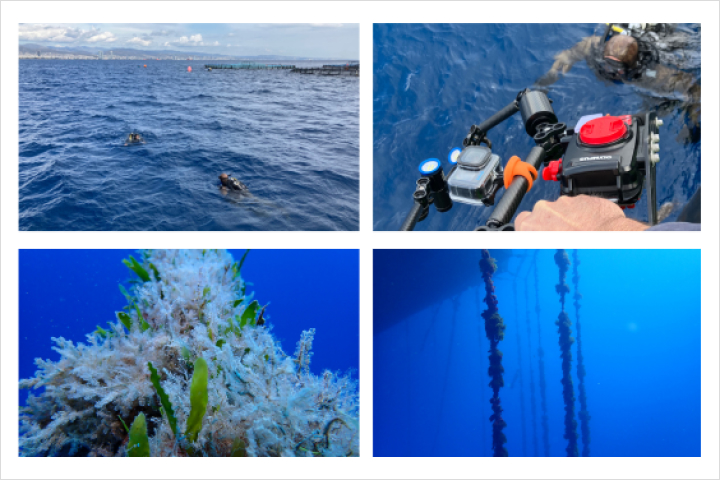Diving into change: how climate change is reshaping the aquaculture sector

The boat rocked gently as we approached the first farm, in the middle of an endless blue stretching to the horizon. A few years ago, these aquaculture cages sat closer to shore, but today, they are anchored farther out at sea, in allocated zones for aquaculture (AZAs).
Over the past five years, fish farmers, researchers and divers in Cyprus have noticed a shift in the Mediterranean Sea’s behaviour. Storms are fewer but stronger. The sea stays warmer for longer. And beneath the cages, the ecosystem is changing in ways that no one had quite expected.
Below the surface
This mission, led by the General Fisheries Commission for the Mediterranean (GFCM) of the Food and Agriculture Organization of the United Nations (FAO) in collaboration with the Department of Fisheries and Marine Research of the Ministry of Agriculture of the Republic of Cyprus, set out to understand how climate change is affecting aquaculture. It is part of a broader effort to assess resilience across the Mediterranean, following similar missions in Tunisia and Croatia.

Scenes from the underwater biodiversity survey in Cyprus @FAO-GFCM/Danijel Kanski
Part of the mission involved conducting an underwater biodiversity survey. A visual census was carried out beneath the cages to observe the ecosystem firsthand, which entailed two divers going down to a maximum of 30 m and swimming from the cages towards the mooring system for a total of 32 min, during which the temperature ranged between 17 and 18°C.

Snapshots of the ecosystem beneath aquaculture cages in Cyprus, including non-indigenous lionfish @FAO-GFCM/Danijel Kanski
At first glance, the waters teemed with life. But it was a different kind of life than had been here before. Lionfish, a non-indigenous species now present in the Mediterranean, moved lazily through the currents, their feathery fins undisturbed by our presence. Native species, however, were harder to find. A few damselfish flickered in the sunlight, a few native scorpionfish clung to a cement block, an annular seabream and the occasional parrotfish darted between the shadows. But the dominance of non-indigenous species, including rabbitfish and pufferfish, was undeniable. Rising sea temperatures have facilitated their spread, altering the delicate balance of the ecosystems.
Looking ahead
The insights gathered from this mission will contribute to a broader understanding of climate change impacts on Mediterranean aquaculture, as well as potential mitigation and adaptation measures for the sector. Climate change is affecting aquaculture in numerous ways: warmer waters can produce changes in fish growth, affect fish health, and potentially damage aquaculture infrastructures through extreme weather events like storms. All these developments can negatively affect the productivity of aquaculture operations. In some areas of the Mediterranean, warming waters have already led to substantial losses, such as the dramatic decline in mussel harvests in Tunisia’s Bizerte Lagoon after sea temperatures rose to 30°C last summer.

Impacts of high temperatures on a mussel farm in Tunisia’s Bizerte Lagoon during summer 2024 @FAO-GFCM
Documenting these changes, as well as stakeholders’ practical solutions and locally tested measures, could provide other areas in the region with insights and potentially replicable solutions, whether through farm relocation, infrastructure reinforcement, changes in fish density, feed and feeding method modifications, or biodiversity monitoring.
“Our main objective is the operation and further development of an aquaculture sector that will remain financially viable, socially acceptable and environmentally compatible. Climate change has a reciprocal and challenging relationship with aquaculture, with benefits as well as impacts. The knowledge acquired and the better understanding of this change will provide us with the opportunity to identify and implement more effective adaptation and mitigation measures so as to capitalize on the positive aspects and minimize the negative impacts,” said Vassilis Papadopoulos, Head of the Division of Aquaculture, Department of Fisheries and Marine Research, Ministry of Agriculture of the Republic of Cyprus.
While Cyprus may be yet to experience the extreme conditions already seen elsewhere, the warning signs are clear. Fish farmers are making adjustments, researchers continue to track the shifting patterns, and the authorities are ensuring that appropriate adaptation and mitigation measures will be in place.
